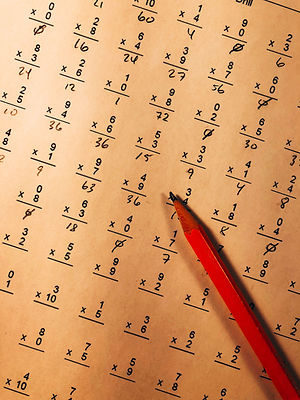
MathBait™ Multiplication
The Sieve
Share this resource!
In this beautiful interactive applet, students explore the sieve of Eratosthenes to identify prime numbers.
Details
Resource Type
Digital Game
Primary Topic
Primes & Factoring
Unit
7
Activity
15
of
22
Before continuing to The Sieve, help students to solidify their understanding of primes. Provide each student with ten small items (such as paperclips or number cubes).
Start with 10. Ask students to make as many equal groups as they can with their ten items. Remind students this is how we find the factors of a number. As students have been practicing their factoring, they should be able to quickly make four groups: placing all ten items in one pile, creating two piles each with 5 items, creating 5 piles each with two items, and creating ten piles with 1 item each. Have students make a table representing the number of piles they can create; for 10 they should transcribe 5.
Allow students to continue (individually or in small groups or pairs), each round removing one item. Thus, next they will find the number of piles using 9 items and transcribe 3 (groups of 1, 3, or 9).
When we reach one, discuss what students found. They should notice the prime numbers always had exactly two groups. For instance, with 3 items we can create three groups placing a single item in each or we can make one big group with all three items. What happened with 1? Help students to see that with 1 item we can only make one group - place our 1 item in its own pile. Because of this, one is not prime. It is also not-not prime (what we call composite) because composite numbers are numbers with more than two groups. One is the only number with exactly one group. It is special because with a 1, we can build all the counting numbers - that is, every number has a factor of 1.
Conclude the activity by allowing students to play with the interactive applet below. Introduce the applet in what works best for your students. We recommend demonstrating first for the class before allowing each student to try it themselves and placing students in pairs or small groups to discuss the applet.
Play
©MathBait created with GeoGebra
Remind students a prime number is like a building block. From the primes we can build the counting numbers. Primes are special because they can only be built with one-blocks or one (sometimes very large) block of their size. Previously we factored a number like 18 into pairs (1 and 18, 2 and 9, and 3 and 6), the prime factorization breaks down a number completely so we can get to know it. The better we know the numbers we are working with, the more powerful we will be.
Now that students have an understanding of a sieve, it's time to build their own! In Activity 3, students will create their own Prime Quilt.
The material on this page is copyrighted by MathBait™. Please use and enjoy it! MathBait™ provides a temporary license for Non-Commercial purposes. You are not permitted to copy, distribute, sell, or make derivative work without written permission from MathBait™.
Tell us what you think!
Click to rate this activity

